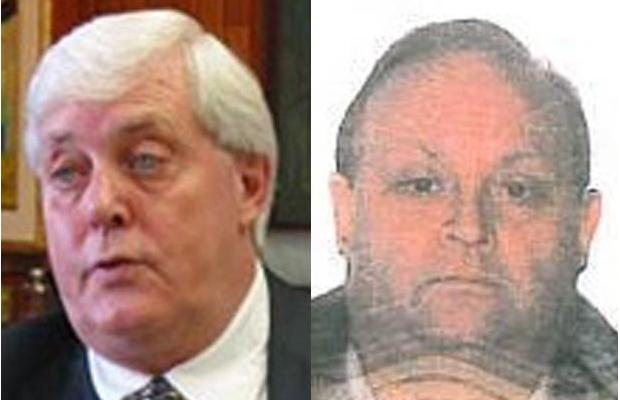August 24, 2015 – The U.S. Court of Appeals for the First Circuit has affirmed the decision of a Magistrate Judge in a Massachusetts federal court case, arising from a $150 million Ponzi scheme known as Millennium Bank. Several investors brought a class action lawsuit against JPMorgan Chase Bank, N.A. (“JPMorgan”), where Millennium related entities held deposit accounts, alleging that the bank aided and abetted the fraud.
Articles Posted in INVESTMENT FRAUD
TelexFree Victims’ Collection of Seized Funds May Be Delayed
While state and federal prosecutors in Massachusetts have secured more than $150 million of the $1 billion raised by alleged investment fraud, known as “TelexFree”, victims’ claims for restitution have yet to be processed. Authorities have said that these funds will not be available until the conclusion of the U.S. Department of Justice’s criminal case against the perpetrators of the fraud, Carlos Wanzeler and James Merrill. The court handling TelexFree’s pending bankruptcy proceedings also has approved a method for disbursing funds.
TelexFree Allegedly Stole Millions from Massachusetts Investors
October 31, 2014 – In April 2014, Massachusetts Secretary of State, William Galvin, filed a complaint against Carlos Wanzeler and James Merrill, alleging that their company, TelexFree, Inc., was operated as a Ponzi scheme. The company operated out of Marlborough and raised almost $1 billion worldwide, which includes over $90 million from Massachusetts residents.
This purported investment fraud primarily targeted Brazilian Americans by selling Voice over Internet Protocol (VoIP) programs, which provided discount long-distance phone call services. Participants made investments of either $289 or $1,375, which bought them advertisement kits for TelexFree’s VoIP programs. Investors could earn a 200-250% return by placing daily ads online. Members were also paid $100 for recruiting another investor, and up to a 3% commission on their recruits’ sales. This compensation model is similar to a traditional pyramid scheme.
Fitchburg Bank Settles for $3.5 Million to Resolve TelexFree Allegations
September 24, 2014 – Fidelity Bank in Fitchburg, Massachusetts, has agreed to pay $3.5 million dollars to the Massachusetts Secretary of State’s Office to settle claims that it allegedly allowed TelexFree Inc. to open bank accounts, without properly screening the company. TelexFree was an alleged investment fraud, which purported to sell discount, long-distance phone plans. The company was operated by Massachusetts residents James Merrill and Carlos Wanzeler and primarily solicited Brazilian and Dominican immigrants by selling “accounts” for about $1,400 and paying investors $100 per week to assist with marketing the company. TelexFree raised over $900 million from thousands of investors. The company was started in Brazil and had its U.S. headquarters in Marlborough.
Bruce Prevost, David Harrold, Palm Beach Capital Management Busted in Connection with Ponzi Scheme
October 19, 2010 – Bruce Prevost and David Harrold allegedly filtered over $1 billion from their hedge fund firms Palm Beach Capital Management LP and Palm Beach Capital Management LLC to the Thomas Petters investment scam. The Securities and Exchange Commission (“SEC”) filed a complaint that alleges from approximately 2004 through June 2008, Prevost and Harrold invested all of their clients’ money in the Petters scam while taking over $58 million in fees for themselves.
Petters’ firm, Petters Company, Inc., allegedly told investors that it used their money to purchase large quantities of consumer electronics and resold them to large retailers like Walmart and Costco. The SEC claims that Petters Company did not purchase any actual electronics and merely operated as a massive Ponzi scheme. The complaint alleges that Prevost and Harrold invested all of their clients money in the Petters scheme, while falsely claiming their money was collateralized by other accounts.
The SEC further alleges that Prevost and Harrold told their investors that the retailers’ payments for the electronics went directly into accounts that would pay off promissory notes held by the Palm Beach Capital investors. In reality, the SEC claims that return payments to investors came from Petters’ company, which was ostensibly other investors’ money.
Benjamin Lee Grant, Sage Advisory Group Massachusetts Investment Scam Discovered
September 30, 2010 – Benjamin Lee Grant, of Boston, Massachusetts, allegedly ran his brokerage firm, Sage Advisory Group, LLC, as a massive investment scam. The Securities and Exchange Commission (“SEC”) filed a complaint that alleges Grant fraudulently enticed more than 300 customers with over $100 million in assets to join his firm. Apparently, Grant recruited clients whose accounts he managed at his former employer, Wedbush Morgan Securities, shortly after his departure in September 2005.
The SEC claims that Grant was a registered representative of Wedbush and almost all of his accounts were by First Wilshire Securities Management, a California investment adviser. Apparently, days after resigning from his position at Wedbush, Grant sent a letter to his former clients on October 4, 2005 advising them that they should switch their accounts to his new operation, Sage. The complaint alleges that Grant’s letter told his former clients that Sage was formed solely to manage their funds and First Wilshire suggested moving their accounts from Wedbush to a discount broker, Charles Schwab & Co.
Grant’s letter also allegedly advised clients that a new fee and commission structure called a “wrap fee” was cheaper according to First Wilshire. The complaint also claims that Grant subsequently told clients that First Wilshire was no longer willing to manage their assets at Wedbush and they had to switch to Sage.
Sandra Venetis, Systematic Financial Investment Fraud Busted
September 10, 2009 – Sandra Venetis was allegedly operating her three entities, Systematic Financial Services, Inc., Systematic Financial Associates Inc., and Systematic Financial Services LLC, as a Ponzi scheme. According to the complaint filed by the Securities and Exchange Commission (“SEC”), Venetis bilked investors for at least $11 million since 1997 by promising returns of 6 to 11 percent per year. Apparently, Venetis misappropriated investor funds for her own personal use and for her relatives.
Apparently, Venetis lured investors by offering promissory notes, fixed income investments, and other supposedly lucrative investments. The complaint alleges that Venetis claimed that the promissory notes were backed by the Federal Deposit Insurance Corporation (“FDIC”) and that the interest payments would be tax free. Venetis also apparently told some investors that their money would be used for loans to various doctors backed by Medicare reimbursements. The SEC claims that Venetis completely made up the names of the doctors and falsified their signatures on loan documents.
According to the complaint, the promissory notes and other offerings were not backed by any legitimate investments. Venetis apparently used the money to pay her personal and business debts, as well as finance her gambling and extravagant vacations. Venetis also allegedly bought a house for her daughter and paid for improvements on her brother’s home.
Daniel Spitzer Ponzi Scheme Busted
June 30, 2010 – Daniel Spitzer allegedly operated several business entities as a foreign currency investment fraud, which raised over $105 million from 400 investors. This week, the Securities and Exchange Commission (“SEC”) filed a complaint that claims Spitzer misled investors from at least 2004 until as recently as March 2010. Spitzer, a resident of St. Thomas, recruited investors from all over the United States.
According to the complaint, Spitzer and his sales team told investors that their money would be placed in investment funds that would, in turn, primarily be invested in foreign currency. Spitzer allegedly enticed new clients by claiming he was an extremely successful fund manager and always produced exorbitant annual returns, including one year of 180%. To facilitate his purported scheme, Spitzer allegedly issued phony documents, including false K-1s, to clients.
The SEC claims that, in reality, Spitzer only invested $30 million of client funds, including $16.5 million in a foreign entity that ultimately lost money and was liquidated back to Spitzer. Spitzer also apparently invested $16 million in money market funds but only earned a few thousand dollars.
Milowe Brost, Gary Sorenson Gold Investment Fraud Stopped by Feds
June 17, 2010 – Milowe Brost, Gary Sorenson, Larry Adair, Ward Capstick, Bradley Regier, and Martin Werner allegedly operated their entities Syndicated Gold Depository, Merendon Mining Corp. Ltd., Merendon Mining (Nevada) Inc., and the Institute for Financial Learning Group of Companies, Inc. as a massive $300 million Ponzi scheme. Last week, the Securities and Exchange Commission (“SEC”) filed a complaint that alleges Brost and Sorenson were the leaders of the alleged Gold mining fraud, which convinced 3,000 investors to cough up large amounts of money. 
The SEC claims that Brost led a sales team, called Structurists, which held investment seminars where they claimed to be independent financial professionals. At the seminars,  the men allegedly pushed investments in gold mining businesses that could generate annual returns ranging from 18 to 36 percent.
the men allegedly pushed investments in gold mining businesses that could generate annual returns ranging from 18 to 36 percent.
The SEC also alleges that Brost and the Structurists promised that all investments were collateralized by gold.
The complaint claims that Brost and his sales team sold shares in various entities and then through a unique “structuring” process that ultimately led to the transfer of funds from Syndicated Gold Depository to Merendon Mining Corp. Ltd. Apparently, Sorenson claims to be an independent businessman making loans to Merendon, but in reality controlled the company.
Luis Felipe Perez Diamond Investment Fraud Busted
June 3, 2010 – Luis Felipe Perez allegedly operated his investment business, which he claimed financed jewelry stores and pawn shops, as a massive $40 million Ponzi scheme. The Securities and Exchange Commission (“SEC”) filed a complaint, which alleges that from 2006 to June 2009 Perez operated his scam by recruiting primarily Hispanic investors from the Miami area. Allegedly, Perez told investors that their money would be used to finance his jewelry stores, Lucky Star Diamonds Inc. and Luis Felipe Jewelry Design Corp., as well as pawn shops in New York City.
complaint, which alleges that from 2006 to June 2009 Perez operated his scam by recruiting primarily Hispanic investors from the Miami area. Allegedly, Perez told investors that their money would be used to finance his jewelry stores, Lucky Star Diamonds Inc. and Luis Felipe Jewelry Design Corp., as well as pawn shops in New York City.
According to the SEC, Perez was able to grow his scam primarily by word of mouth, especially in the Hispanic community. The complaint says that Perez enticed investors by offering “no-risk” loan agreements with annual returns ranging from 18 to 120 percent. The SEC claims that Perez falsely told investors that their loans were secured by diamonds that had specifically been set aside for them in New York City pawn shops, which he financed. Perez apparently even duped clients by providing them access to safety deposit boxes that contained, unknown by investors, fake diamonds. The SEC further claims that Perez misled investors by telling them they were added as beneficiaries to his life insurance policy, which had lapsed at the time.
 Boston Accident and Injury Lawyer
Boston Accident and Injury Lawyer

